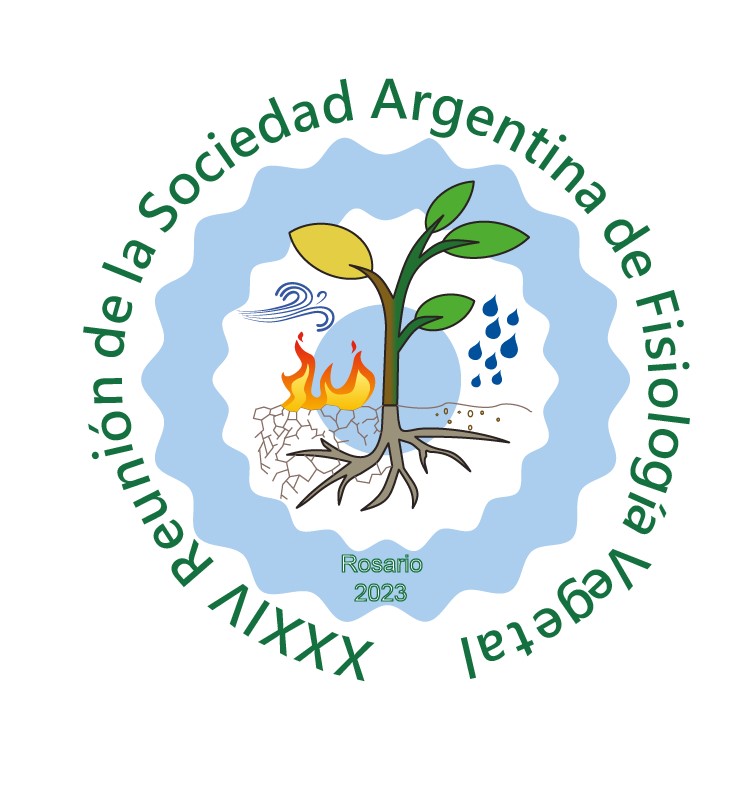View Item
- xmlui.general.dspace_homeCentros e Institutos de InvestigaciónCICVyA. Centro de Investigación en Ciencias Veterinarias y AgronómicasInstituto de BiotecnologíaPresentaciones a Congresosxmlui.ArtifactBrowser.ItemViewer.trail
- DSpace Home
- Centros e Institutos de Investigación
- CICVyA. Centro de Investigación en Ciencias Veterinarias y Agronómicas
- Instituto de Biotecnología
- Presentaciones a Congresos
- View Item
Morphological diversity, selective signals and evidence of local adaptation in Argentinean maize landraces
Abstract
The northern region of Argentina is home to more than 60 native maize landraces, with two main genetic groups of high phenotypic variability: the high-altitude Andean landraces, present in northwestern Argentina (NWA), and the floury landraces of the northeast (NEA). This work evaluated 9 accessions from each region by means of reciprocal transplant gardens (Maimará, Jujuy & Cerro Azul, Misiones) in order to demonstrate their local adaptation. The
[ver mas...]
The northern region of Argentina is home to more than 60 native maize landraces, with two main genetic groups of high phenotypic variability: the high-altitude Andean landraces, present in northwestern Argentina (NWA), and the floury landraces of the northeast (NEA). This work evaluated 9 accessions from each region by means of reciprocal transplant gardens (Maimará, Jujuy & Cerro Azul, Misiones) in order to demonstrate their local adaptation. The variability of 14 agro-morphological and 6 phenological and yield characters was studied using general linear mixed models. NEA landraces showed higher mean phenotypic values, while the NWA ones showed the highest variation in both environments, with a negative correlation between collection altitude and most of the traits. Morphological structuring assessed by a discriminant analysis of principal components (DAPC) revealed the existence of groups unique to each region and a high degree of admixture, with each accession consisting of more than one of the inferred groups. The Andean NWA group was the most consistently recovered in cluster analyses, while NEA maize was divided into two groups not concordant with prior divisions. The search for selective signals used PST - FST comparisons, representing morphological and molecular neutral divergence, respectively. Directional selection signals were detected both within and between regions at most traits, being strongest at the region level and varying in magnitude between gardens. Moreover, fitness values in the NEA garden, measured as the number of plants with good seed quality per plot, showed maladaptation and low yields of NWA maize outside its native range. Taken together, our analyses suggest that several traits mediate local adaptation in maize landraces from northern Argentina. From a broader perspective, the extensive variability found within regions highlights the need to consider this source of variation in the design of in situ and ex situ conservation programs.
[Cerrar]

Descripción
Poster y resumen
Fuente
RAFV Conference 2023 XXXIV Argentinian Meeting of Plant Physiology. (Reunión de la Sociedad Argentina de Fisiología Vegetal) September 24 – 27, Rosario, Santa Fe, Argentina
Date
2023-10
Editorial
Sociedad Argentina de Fisiología Vegetal
Formato
pdf
Tipo de documento
documento de conferencia
Palabras Claves
Derechos de acceso
Abierto
 Excepto donde se diga explicitamente, este item se publica bajo la siguiente descripción: Creative Commons Attribution-NonCommercial-ShareAlike 2.5 Unported (CC BY-NC-SA 2.5)
Excepto donde se diga explicitamente, este item se publica bajo la siguiente descripción: Creative Commons Attribution-NonCommercial-ShareAlike 2.5 Unported (CC BY-NC-SA 2.5)


